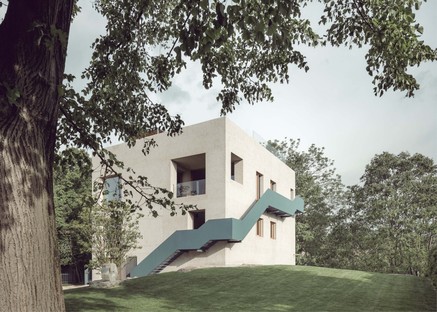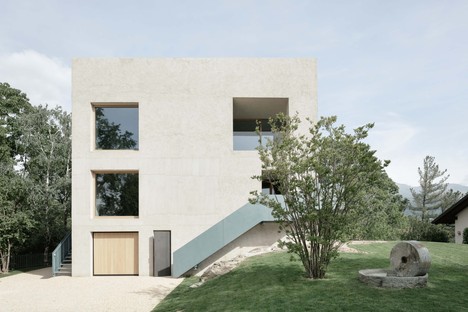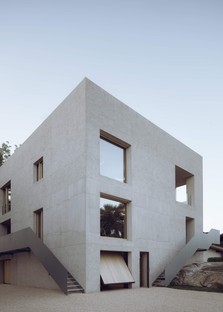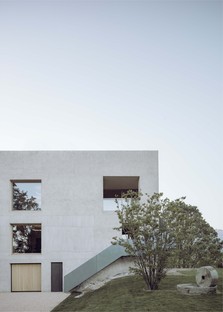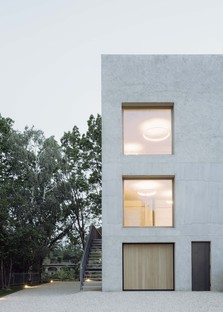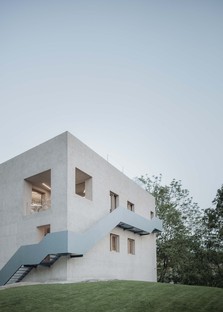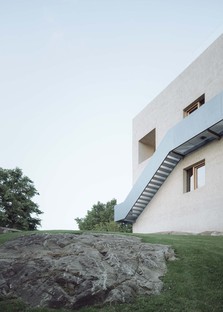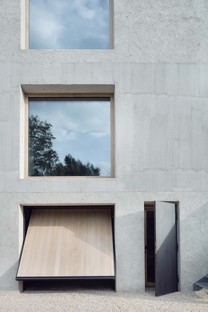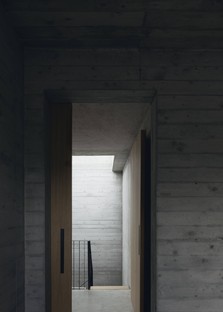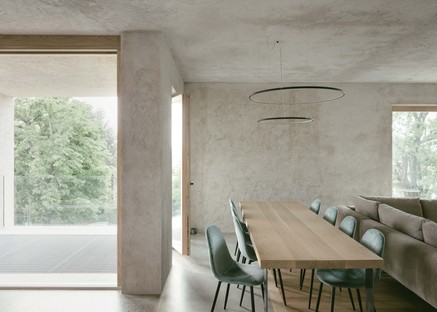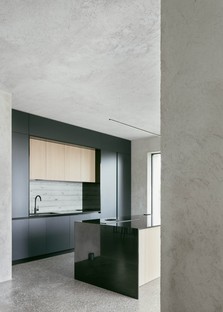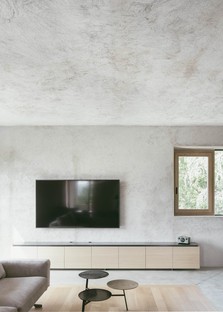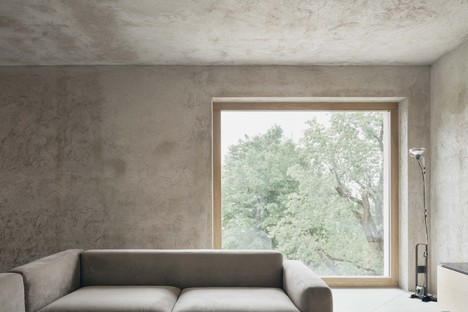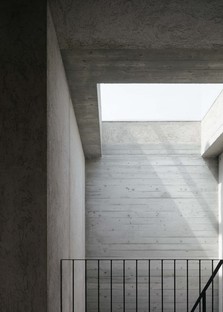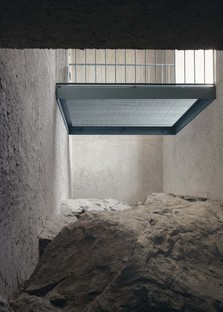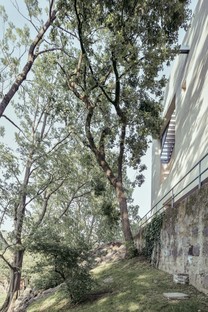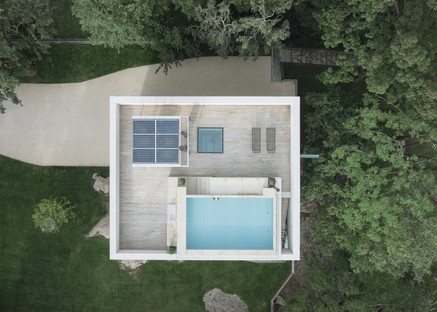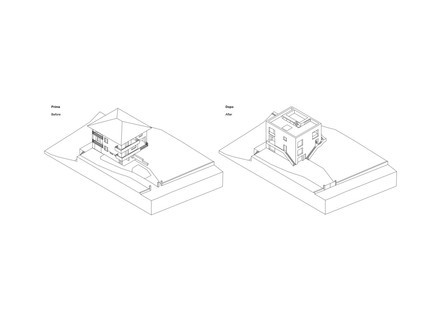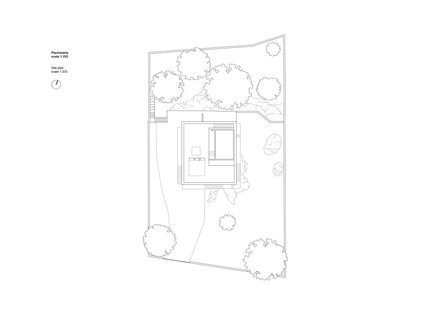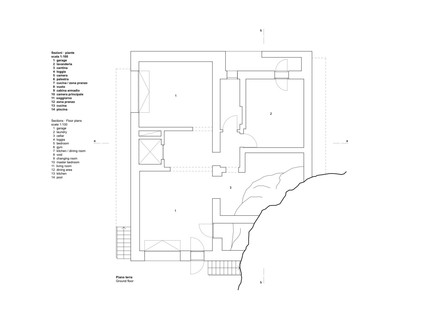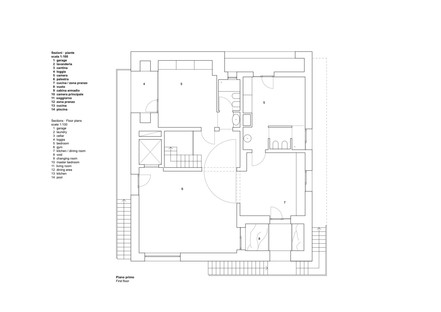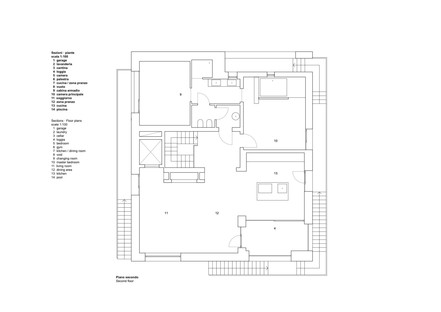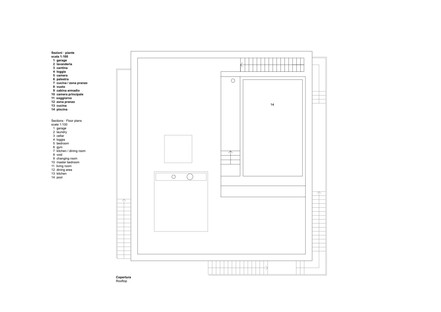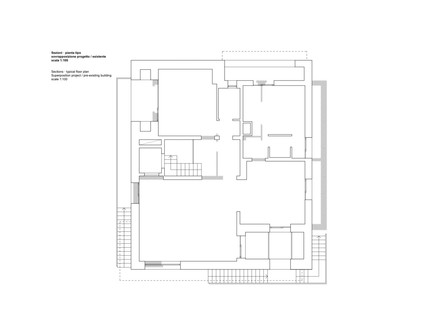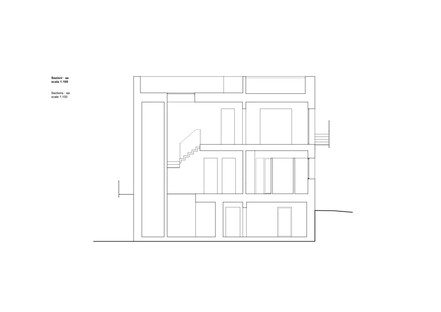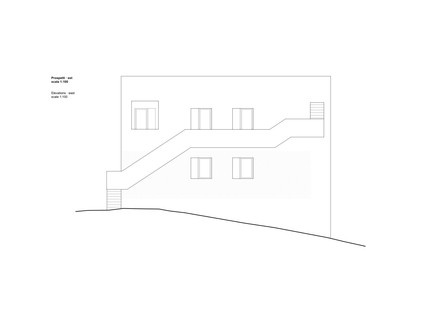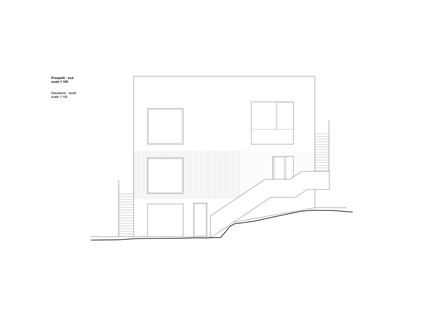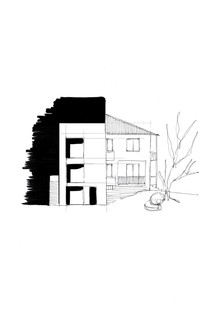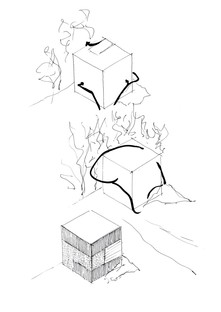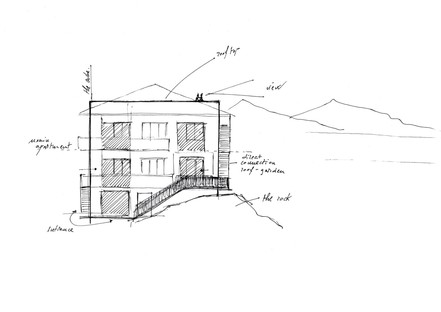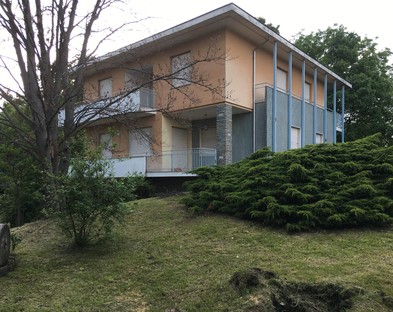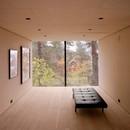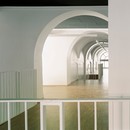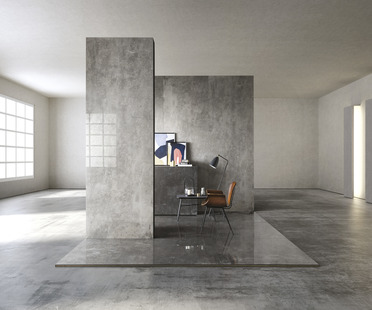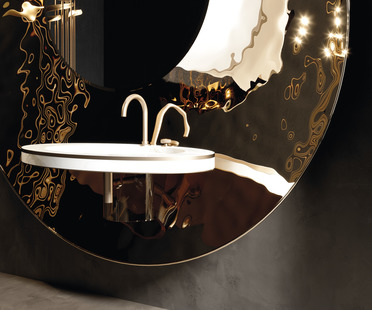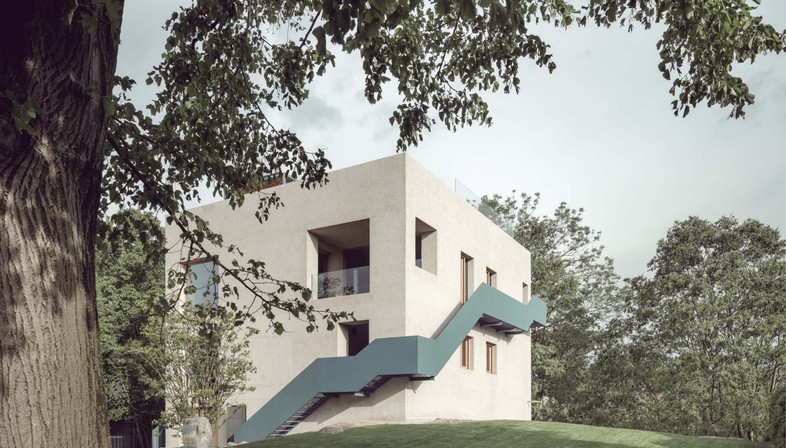
“Il Generale” is a revolutionary home renovation project by Archisbang in Ivrea, implemented at the same time as the studio was completing its renovation work on Pascoli school in Turin. Covered in Floornature some time ago, the public school project conducted in collaboration with Areaprogetti won an honourable mention in Premio Architetto Italiano 2020, the 2020 Italian Architect Awards.
While the reclamation of the school in Turin was intended to restore the building’s late nineteenth-century layout, eliminating the buffer walls added over the years to free the monumental spaces and restore the building’s original vocation, Archisbang took the opposite approach in the Ivrea home.
The 450-square-metre home on three levels was built in the sixties, and offered plenty of space but no particular architectural quality. Set in a residential hilltop neighbourhood in Ivrea, in a big green area to the north of the historic town centre and close to the morainic hills characteristic of the area, the home was a typical example of suburban architecture on the outskirts of a mid-sized Italian town. The only feature that made it stand out from the neighbourhood’s other single-family dwellings with big gardens was its imposing size, perhaps disproportionate to its context and somehow authoritarian, hence the nickname “Il Generale”.
Architects Silvia Minutolo, Marco Giai Via and Alberto Perino explain the dilemma they faced in the project, which is not very different from other projects private homeowners have been submitting to architects in recent years:
“The structural problems and issues with energy and the environment inherent in Italy’s vast legacy of buildings of no particular architectural value often raise the question of the economic sustainability of renovation, which almost always ends up tipping the balance in favour of demolition and reconstruction, or even consumption of virgin land. But in the context of a wider-ranging vision of environmental sustainability – which is now more urgent than ever, and for which strong incentives have rightly been introduced – we can easily understand the attraction of redevelopment projects aimed at giving buildings features comparable to those of a new construction. It is, however, possible to bring new life to a building with an approach that is drastic enough not to disappoint the expectations of today’s clients, preserving the building’s original footprint and limiting waste and the production of refuse which is hard to dispose of. In terms of design, the theme of the presence of the past, traditionally the common theme of architectural reclamation projects, gives way to intriguing interpretations of the evolution from limitation to opportunity.”
The project was not, therefore, a matter of reclaiming and converting a building of architectural value, but of transforming the image and redesigning the interiors to improve energy efficiency, an essential step when renovating buildings dating back to the nineteen-sixties.
Despite this, a number of essential features were to be maintained, such as the home’s overall mass and its central position on the gently sloping lot, its relationship with natural materials, symbolised by a series of rocks emerging from the ground on which the home was built, and its subdivision into three connected but independent floors.
As shown in the sketches, the project began with elimination of all the overhangs in the original building, the balconies and eaves, reducing the home to its basic volume. The roof was converted into a flat rooftop terrace, and then three separate entrances were identified, adding three staircases with solid parapets like those used for the courtyard fire escapes in the Pascoli school project. Minimal strips of metal, the staircases give the home a note of dynamism contrasting with its monolithic structure.
To improve the building’s energy efficiency, its exterior was covered with insulated cladding, enclosed between slabs of lightweight concrete then finished with raw natural lime plaster. This procedure was performed in addition to structural reinforcement to earthquake-proof the building.
The layout of the floors in the home preserves the existing interior walls wherever possible, so that the design of the new square windows partly overlaps the existing ones, and every façade has a “face” of its own, different from all the others thanks to the different proportions of the windows, loggias and doors. Frames are reduced to a minimum, without any decoration or unnecessary details, so that the home looks like a perfect cube, alternating solid concrete walls with the empty spaces of large windows, the shadows of the terraces, and the infill of the doors.
The sense of unity apparent in the villa when seen from a distance gives way to definition of three apartments one above the other, not only in order to emphasise the independent entrances with three overhanging staircases but also due to the differences in the finishes of the façades on the three levels that become visible upon closer inspection. The villa may, however, still be used as a single home, as the three levels are also connected by an indoor staircase and an elevator.
In functional terms, the ground floor also contains two garages, a laundry room and a storage cellar by the big rock emerging from the soil on which the whole house stands. The first floor may be divided into two mini-apartments with a wooden partition that opens up 180° to assign the big living room to one or the other of the apartments. On the top level is the main home, directly connected to the rooftop terrace which serves as its hanging garden, with views over the Alps and the morainic hills of Ivrea. The bedroom is enclosed in a bare concrete box which provides the principal reinforcement of the existing structure, allowing a swimming pool to be installed on the roof above it.
The most radical stylistic choice in the project is apparent in the treatment of the surfaces, both the bare concrete exterior with three different finishes identifying the three floors and the internal walls of trowelled concrete, in combination with Terrazzo and wood flooring. In bold contrast with the polished image of the homes built in the neighbourhood in the sixties, the key to this house is its relationship with its natural surroundings, imitating the dialogue between the outdoor and indoor landscapes typical of northern European architecture.
Mara Corradi
Architects: Archisbang (Silvia Minutolo, Marco Giai Via, Alberto Perino)
Location: Ivrea, Italy
Structural engineer: Marco Cuccureddu
Client: private client
Builder: Perino Costruzioni S.r.l.
Surface: 450 m2
Completion: December 2019
Photos: Aldo Amoretti











